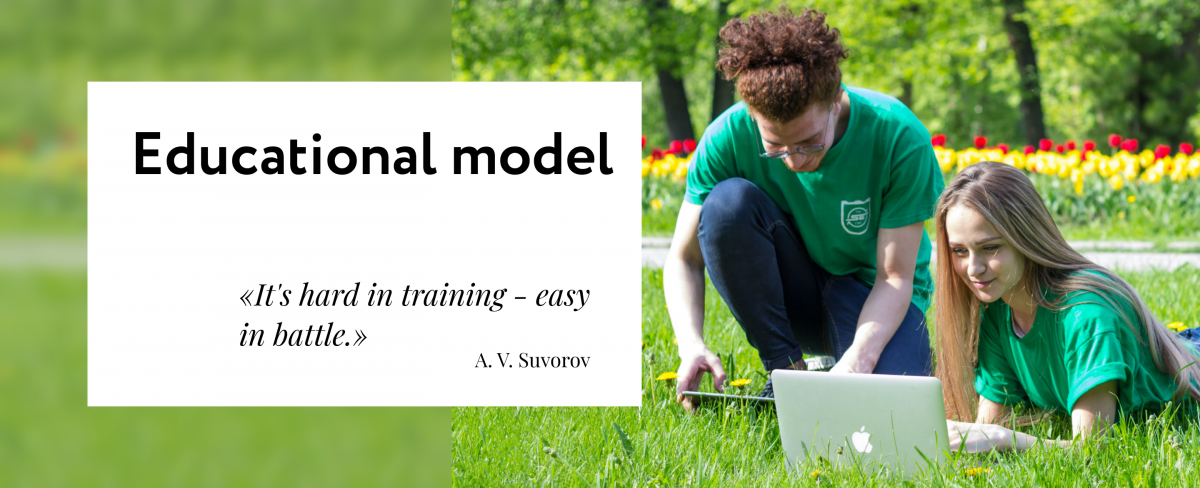
When developing the HITs educational model, the following controversial issues of modern education were taken into account:
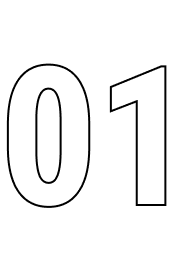 |
Professional training vs. Education Is it possible to simultaneously provide the students with an opportunity to acquire professional skills (necessary for starting a career) and develop a broad outlook (for further growth)?
|
|
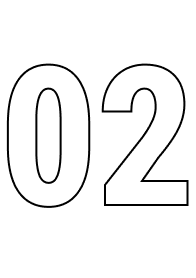 |
Hard Skills vs Soft Skills. Professional skills (Hard Skills) are the main goal in the training of software engineers. However, modern professional activity is impossible without communication skills and teamwork skills (Soft Skills).
|
|
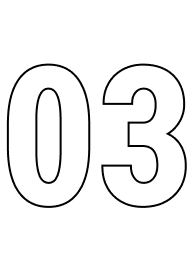 |
Teach vs. Instruct The reason for this conflict lies in the difference between the method where the student stays passive throughout the learning process (when one must complete an obligatory set of disciplines without any choice) and the method in which the student independently chooses every subject one wants to be included in individualized education plan. |

As a result of long and intense (sometimes contradictory) discussions, the HITs team came up with a set of principles that became the foundation for planning every course and the entire structure of the curriculum:
Learning by Doing
The main value of any proactive approach is people, team members who, first, are ready to act and try to solve problems, even if they do not know anything about these problems. In this regard, we want our disciplines to be aimed at learning as the process of some activity, and not being just a drill and kill method. If you need to find a rock-climbing expert, who would be a person of choice: one who learned all the instructions by heart but has climbing experience only at the training ground, or one who tried to climb Everest and reached just the middle of it? We try to emphasize the ability to do something, while the theory serves as an auxiliary tool. As a result, in most cases, students have permission to use Google and any information they can (or should) find independently (we harshly condemn cheating) and apply to current tasks, but often tasks and problems are designed in such a way that the answers cannot be easily found.
The student is an active participant in his/her education
This principle needs a certain explanation. It does not mean that in our school we provide students with a choice of a free plan in subjects, but it means that we have a different approach to courses and their content. Firstly, there is an extended grading scale for most subjects, and secondly, this scale let us evaluate not only how well students perform the same tasks, but also what tasks (or their sub-items) the students decided to complete.
Continuous development of subjects and academic staff
As the saying goes, "stagnation is followed by regression." Therefore, after each year, there are changes (potentially, for improvement) to the courses to be made, both in the content and in the conditions for passing. When revising, the following factors are considered:
 |
Changes in the professional component of the courses/modules.
|
||
 |
Students feedback.
|
||
 |
International practice and teaching standards for similar and related disciplines.
|
||
 |
Feedback from partner companies about the students' training. |
Professional rules and communication environment
HITs actively supports tools that allow teaching remotely (messengers, project management tools, version control systems, systems for accessing materials, etc.) both in blended and online learning modes. When the pandemic started, HITs managed to transfer 90% of the courses’ content to online learning mode in 2 days. But besides the tools, teachers actively support professional communication that is more like the team-lead-junior relationship within the team than the classic student-teacher relationship. We mean that:
 |
First, students can ask almost any question. For example, about the meaning of a topic given or the whole subject in their curriculum.
|
||
 |
Second, we do not evaluate students, but their work. In Russia, there is a common saying: "At first you work for the grades in your student’s record book, and then the grades work for you." This phrase does not mean much for us because even an excellent student can perform poorly, therefore, the grade will be based on the quality of the result obtained, and the student's previous merits will not be taken into account. |
Interesting, therefore difficult
The subjects and the method of their arrangement prepare students for a wide range of situations that may occur in their professional life. We can include there several deadlines for different projects following swiftly on one another, changing and inconsistent requirements for the assignment, the need to adjust to the imaginary customer's schedule, restrictions on the technology stack or report and project delivery terms. As you can see, to study at the Higher IT School is difficult, but interesting and sometimes fun. A person who wants to pursue an active career in the IT field must know how to cope with loads of difficulties and enjoy overcoming them.
The above principles became the foundation of our course planning.
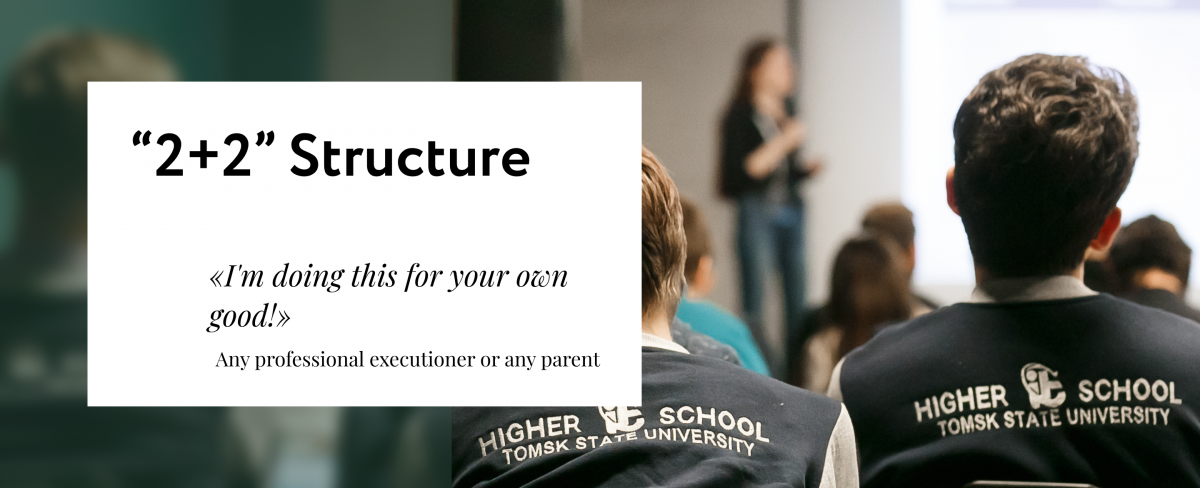
Our programme design based on 2 + 2 structure.

For the first two years, students go through a wide range of different courses, whose overall goal is to master versatile skills from different fields of the IT industry. Also, students consciously begin to think over what professional training path to choose. Those students who have reached the end of their second year choose among 3 different tracks:
 |
Professional track A student makes an informed choice for professional training in a company (an internship). Active professional training most often begins with the position of a junior developer (there are exceptions, however) in any IT company (recently in Tomsk only). The internship equals to a part-time job; the student generally performs the company’s routine tasks for approximately 20 hours a week. Work placements are held in our partner companies. A student who has chosen this track is obliged to pass a profession-oriented interview in the company (i.e. academic staff do not influence the process and the results of interviews).
|
|
 |
Scientific track This track is for students who want to devote themselves to solving complex problems from various branches of science. In this track, students, first, conduct research and /or solve applied scientific problems using their knowledge in the IT domain. In contrast to the professional one, the main advantage of this track is freedom to conduct scientific research, i.e., the student decides which research and tasks are worth his time and which ones are not. Professors, in turn, encourage and develop the interests of students, according to scientific ethics and protocol.
|
|
 |
Innovation track Our programme also gives chance to IT start-ups, and for the students, it is a great opportunity to develop their own. If students can convince investors that their start-up is a promising one, they get the right to choose the innovation track. The goal of this track is to bring your start-up to the level of a company that exists independently and brings economic benefits to society, and profit for its owners. |
